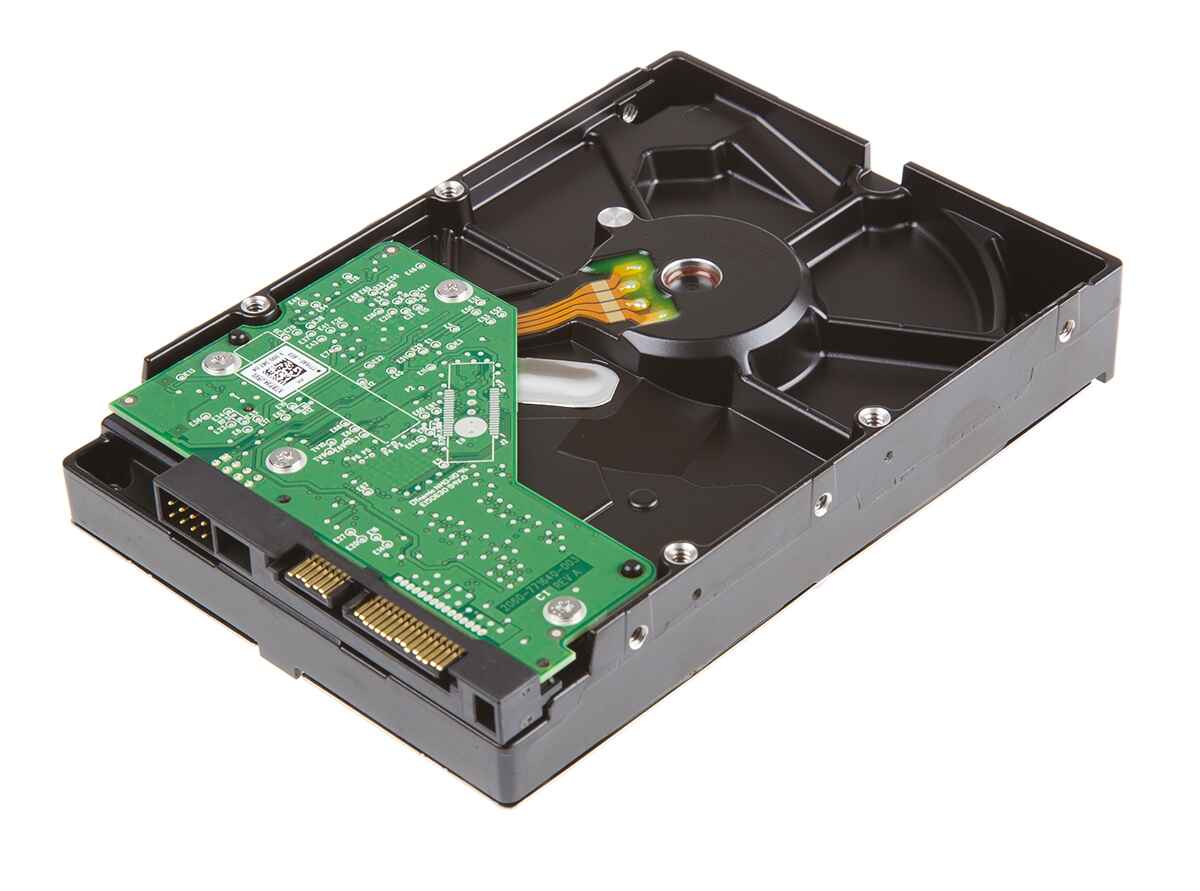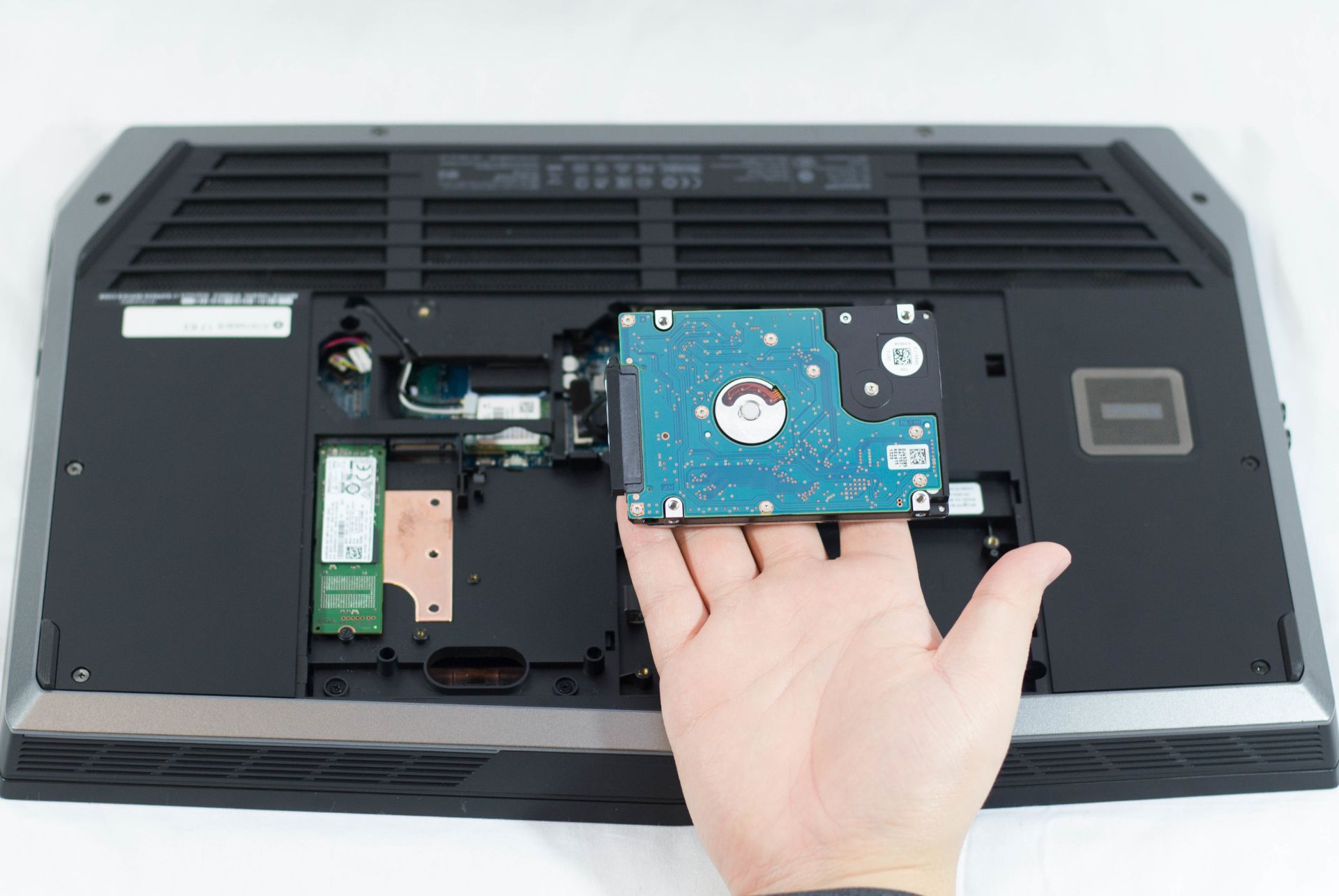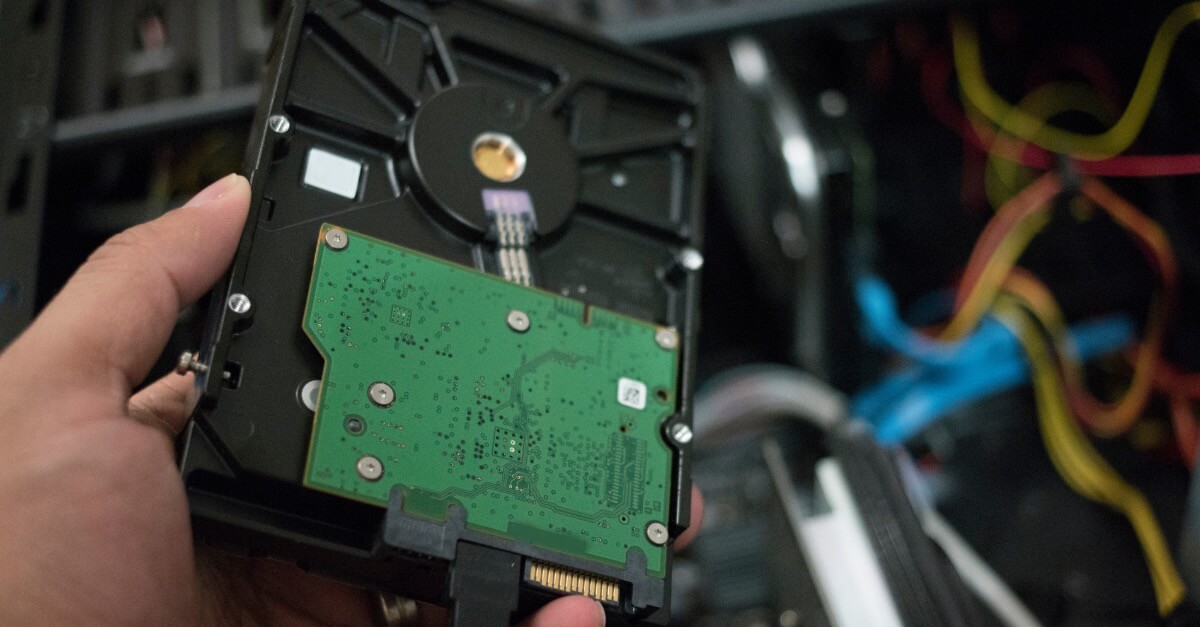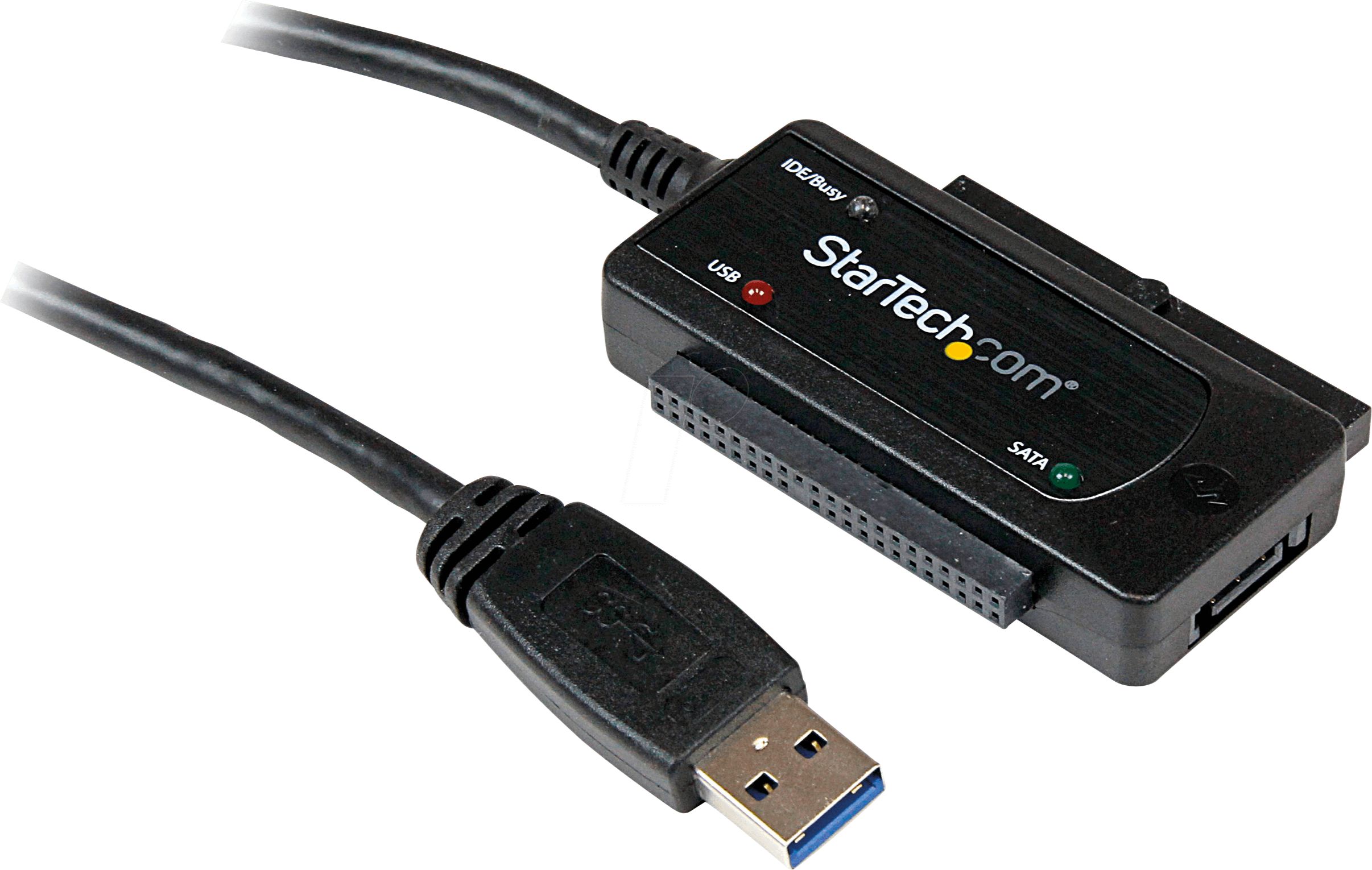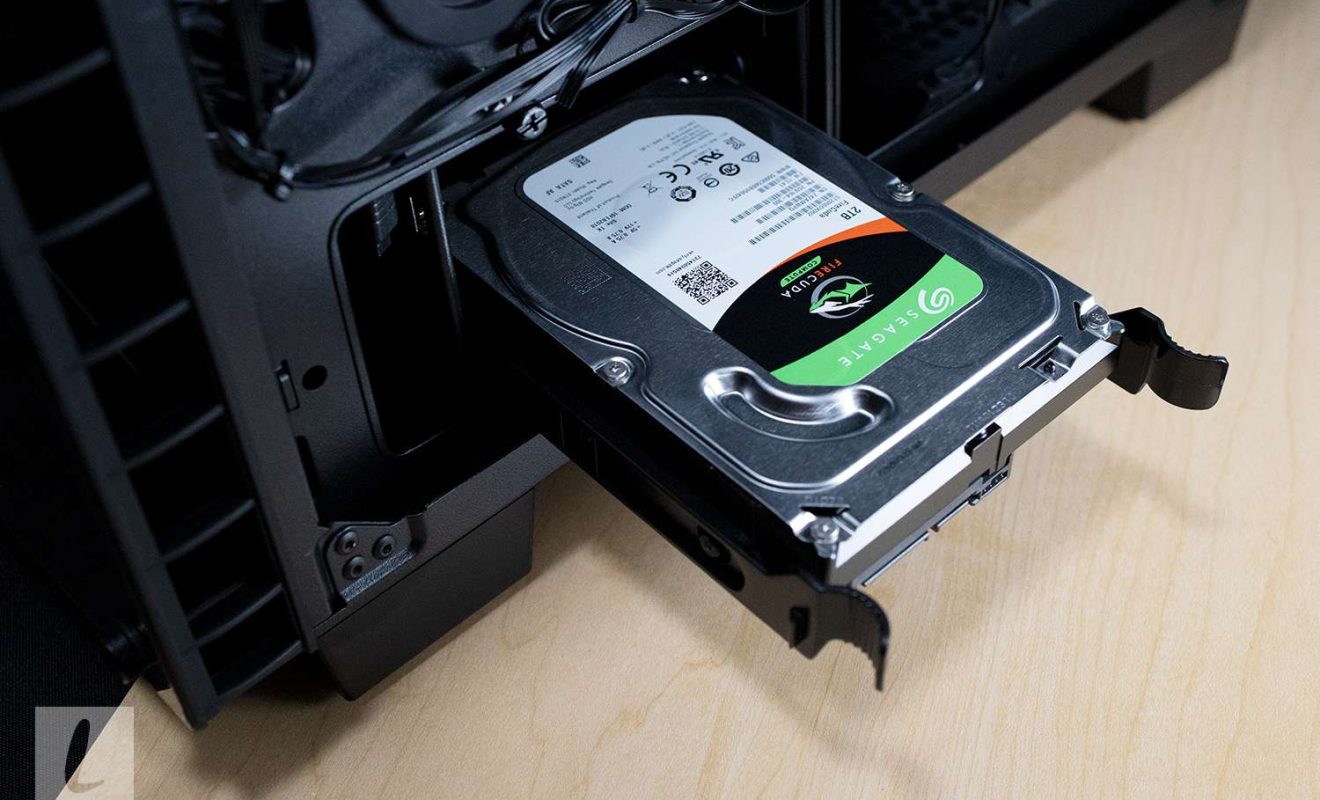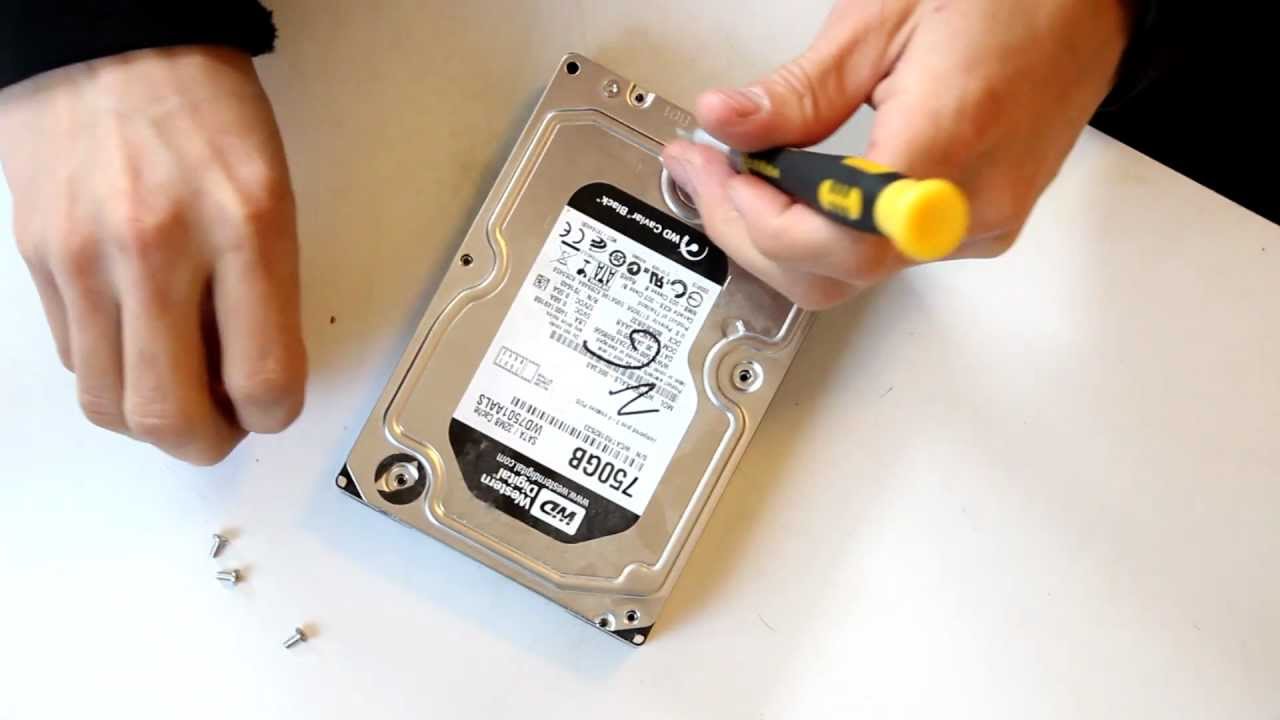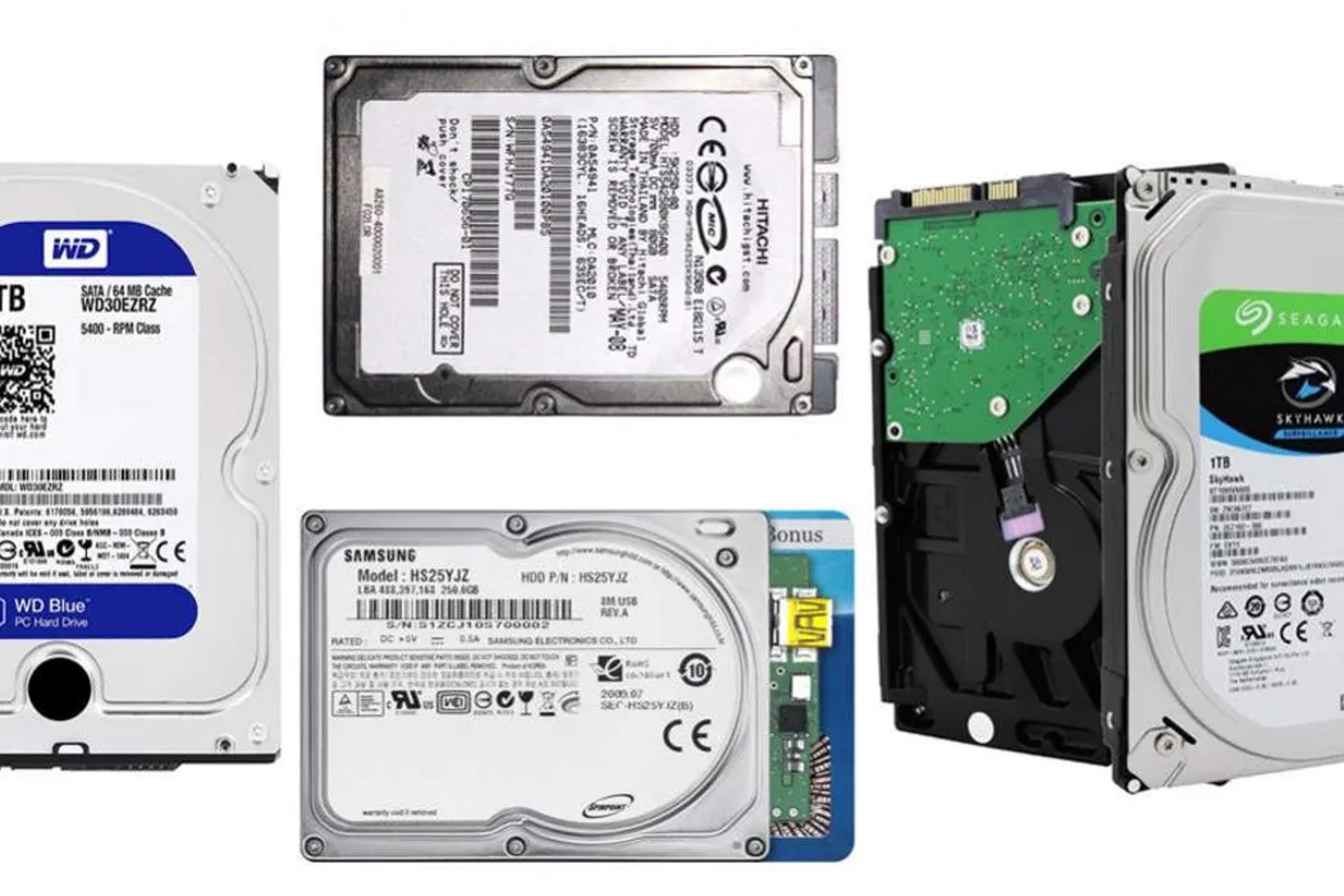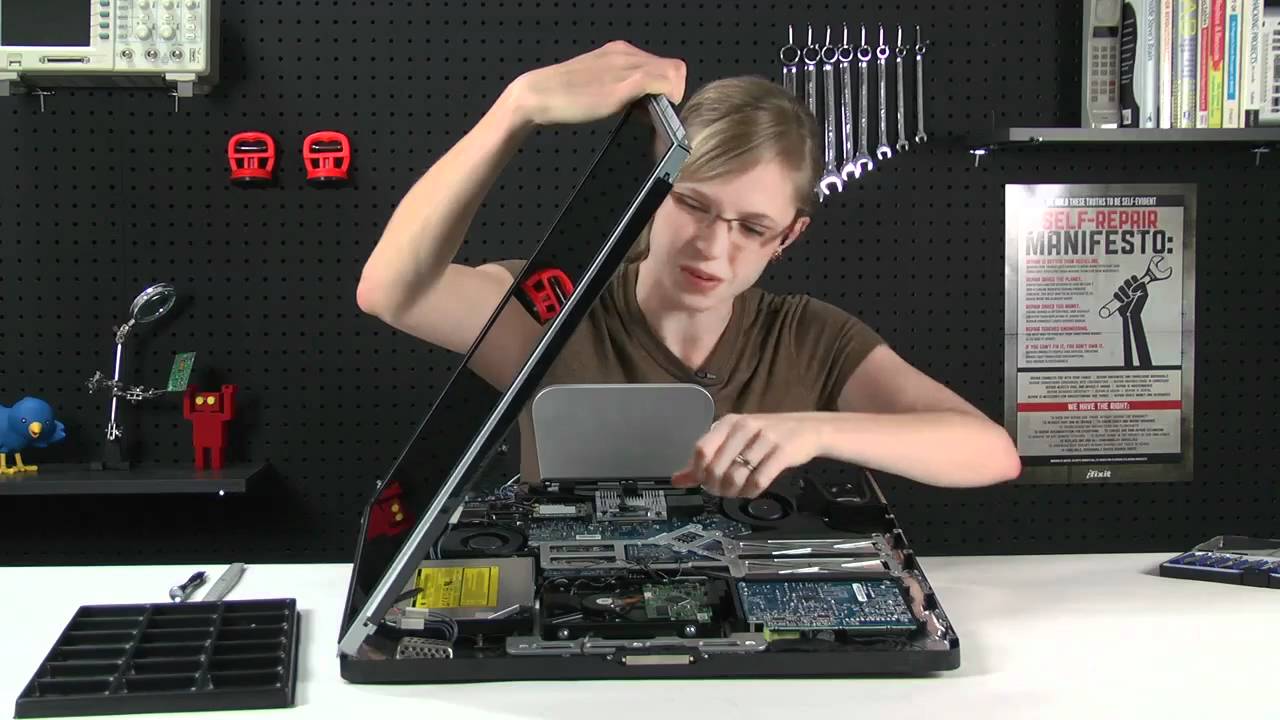What is an Internal Hard Disk Drive?
An internal hard disk drive (HDD), often referred to simply as a hard drive, is a crucial component of a computer system. It is a non-volatile storage device that stores and retrieves digital information. Designed to be installed inside the computer case, it is the primary storage medium for the operating system, software applications, and user data.
The internal hard drive is responsible for storing and retrieving data on magnetic platters using a read/write head. It provides the long-term storage capacity needed to store large amounts of data, such as documents, photos, videos, and applications, making it an essential component for both personal and professional use.
Internal hard drives are available in various storage capacities, such as 500GB, 1TB, 2TB, and beyond, allowing users to choose the size that best suits their needs. They typically connect to the computer’s motherboard using a SATA (Serial Advanced Technology Attachment) interface, providing fast data transfer rates.
These drives are essential for the overall functionality of a computer system as they not only store important data but also determine the system’s performance. The speed at which data can be read from or written to the hard drive affects the overall responsiveness of the computer.
Internal hard drives are commonly found in desktop computers but can also be found in laptops, gaming consoles, and certain specialized systems. They are a critical component that can be upgraded or replaced in order to expand storage capacity or improve performance.
In recent years, solid-state drives (SSDs) have gained popularity as an alternative to traditional hard disk drives. SSDs offer faster data transfer speeds, better shock resistance, and lower power consumption. However, internal hard disk drives remain a cost-effective option for storing large amounts of data, making them a popular choice for users who prioritize storage capacity over speed.
In the next sections, we will explore the history, components, working mechanism, types, advantages, and disadvantages of internal hard disk drives, as well as important factors to consider when buying one.
Introduction
Computers have become an integral part of our lives, and they rely on a wide range of components to function effectively. One such crucial component is the internal hard disk drive (HDD). The internal hard drive plays a fundamental role in storing and providing access to data on a computer system.
In this era of digital information and rapidly evolving technology, the importance of internal hard disk drives cannot be overstated. Whether you are browsing the web, creating documents, editing videos, or playing games, the internal hard drive is at the core of all these activities.
Just imagine trying to use your computer without an internal hard disk drive. You wouldn’t be able to store your files, install programs, or access your data. The internal hard disk drive acts as the home for all your important information, allowing you to save, organize, and retrieve your files with ease.
Throughout this article, we will delve deeper into the world of internal hard disk drives. We will explore their history, understand their components, examine how they work, and uncover the different types available in the market.
Additionally, we will discuss the advantages and disadvantages of using internal hard disk drives, as well as the factors to consider when purchasing one for your computer system.
By the end of this article, you will have a comprehensive understanding of internal hard disk drives, enabling you to make informed decisions regarding their use and selection for your computing needs.
So, let us embark on this journey to discover the inner workings of internal hard disk drives and the vital role they play in shaping our digital experiences.
History of Internal Hard Disk Drives
The development of internal hard disk drives can be traced back to the early days of computing. The need for large-capacity storage devices arose as computers became more advanced and capable of handling increasing amounts of data.
The first commercial internal hard disk drive was introduced by IBM in 1956. Known as the IBM 350 Disk File, it had a storage capacity of just 5 megabytes, which was a significant improvement compared to other storage mediums at the time.
Over the years, advancements in technology led to significant improvements in storage capacity and performance of internal hard disk drives. In the 1970s, hard drives with removable platters were introduced, allowing for easier storage and transfer of data.
In the 1980s and 1990s, there was a rapid increase in the popularity of personal computers, leading to a surge in demand for higher-capacity internal hard drives. Manufacturers like Seagate, Western Digital, and Maxtor emerged as the key players in the industry, introducing drives with larger storage capacities and faster data transfer speeds.
The late 1990s saw the advent of Serial ATA (SATA) technology, which replaced the older and bulkier parallel ATA interfaces. SATA interfaces provided faster data transfer rates, improved cable management, and better overall performance.
In recent years, solid-state drives (SSDs) have gained prominence as an alternative to traditional hard disk drives. SSDs use flash memory technology, offering faster read and write speeds, lower power consumption, and increased durability.
However, internal hard disk drives continue to be widely used due to their cost-effectiveness and high storage capacities. Hard disk drives with terabyte-level capacities are now commonplace, allowing users to store vast amounts of data.
Looking ahead, the future of internal hard disk drives is likely to be influenced by advancements in technology and the increasing demand for faster and more efficient storage solutions. While SSDs are rapidly gaining popularity, hard disk drives will likely continue to be an integral part of computing systems for the foreseeable future, meeting the storage needs of individuals and businesses alike.
With a rich history of evolution and continuous improvement, internal hard disk drives have shaped the way we store and manage data, enabling the digital age to flourish.
Components of an Internal Hard Disk Drive
An internal hard disk drive is a complex piece of technology that consists of various components working together to store and retrieve data. Understanding these components can give us insights into how the internal hard drive functions and how it contributes to the overall performance of a computer system.
1. Platters: At the core of an internal hard disk drive are one or multiple circular disks known as platters. These platters are made of glass or aluminum and are coated with a magnetic material. Data is stored on the surfaces of these platters in binary format, represented by magnetic charges.
2. Read/Write Heads: Positioned above and below each platter is a read/write head. These heads are responsible for the reading and writing of data on the magnetic surface of the platters. They move rapidly across the spinning platters to access different areas and retrieve or store data through magnetic changes.
3. Actuator Arm: The actuator arm is responsible for controlling the movement of the read/write heads. It consists of a hinged arm that pivots to position the heads above the desired track on the platters. The actuator arm moves with precision to access specific sectors on the platters where the data is stored.
4. Spindle Motor: The spindle motor is responsible for spinning the platters at a constant high speed. The platters rotate at speeds ranging from 5,400 to 15,000 revolutions per minute (RPM), allowing for fast and efficient data access.
5. Controller Board: The controller board, also known as the disk controller or PCB (Printed Circuit Board), is responsible for controlling the overall operations of the internal hard disk drive. It manages data transfers, interfaces with the computer’s motherboard, and handles error correction and other functions.
6. Cache: The cache, also known as the disk buffer, is a small amount of high-speed memory located on the internal hard drive. It serves as a temporary storage area for frequently accessed data, improving read and write speeds by reducing the need to access the platters for every data request.
These components work in harmony to facilitate the storage and retrieval of data on an internal hard disk drive. When a computer needs to access or store information, the read/write heads move to the correct position on the spinning platters, and the data is read or written magnetically.
It is important to note that different generations of internal hard disk drives may have additional components or variations in design. However, the core components mentioned above are essential to the basic functionality of almost all internal hard drives available in the market today.
Understanding the components of an internal hard disk drive can help users make informed decisions when selecting or troubleshooting storage solutions and provide insight into the intricate processes that enable data storage and access in modern computer systems.
How Does an Internal Hard Disk Drive Work?
An internal hard disk drive (HDD) is a fascinating piece of technology that stores and retrieves data on magnetic platters. Understanding how it works can provide insight into the complex processes involved in reading and writing data within the drive.
1. Spinning Platters: When a computer is turned on, the spindle motor within the internal hard disk drive starts spinning the magnetic platters at high speeds. The platters rotate at a constant rate, typically measured in revolutions per minute (RPM). The spinning motion creates the necessary conditions for data access.
2. Positioning Read/Write Heads: The read/write heads, located above and below each platter, are responsible for reading and writing data. To access specific areas on the platters, the actuator arm moves the read/write heads to the correct position. The actuator arm operates with precision, ensuring that the heads are positioned above the desired track on the platter.
3. Reading Data: To read data from the platters, the read/write heads magnetically detect the changes in the magnetic charges on the surface of the platters. As the platters spin, the heads detect the variations in polarity, effectively reading the binary data stored in the form of magnetic charges.
4. Writing Data: When data needs to be stored on the internal hard drive, the read/write heads use electrical currents to change the magnetic charges on the platter’s surface. By altering the polarity of the magnetic particles on the platter, the heads write binary data onto the surface, effectively storing the information.
5. Data Transfer: The data read from or written to the internal hard disk drive is transferred to and from the computer’s memory via the disk controller or PCB. The controller manages the flow of data between the drive and the computer’s motherboard, ensuring seamless communication and data transfer.
It is important to note that the speed at which data can be read from or written to the internal hard disk drive depends on various factors, including the rotational speed of the platters, the data density per platter, and the efficiency of the read/write heads. These factors can affect the overall performance and responsiveness of the internal hard drive.
The internal hard disk drive works in conjunction with the computer’s operating system and other hardware components to manage data storage and access. It stores the operating system, applications, and user data, allowing users to save and retrieve information as needed.
With advancements in technology, solid-state drives (SSDs) have emerged as an alternative to traditional hard disk drives. SSDs use flash memory, which allows for faster data access times and improved performance compared to HDDs. However, the cost-effectiveness and high storage capacities of internal hard disk drives make them a popular choice for users who prioritize storage capacity over speed.
Understanding how an internal hard disk drive works can provide valuable insights into the storage processes that are fundamental to the functioning of modern computer systems.
Types of Internal Hard Disk Drives
Internal hard disk drives (HDDs) come in different types, each offering unique features and capabilities. Understanding the various types can help users choose the right option based on their storage needs, performance requirements, and budget.
1. Hard Disk Drive (HDD): Traditional HDDs use magnetic storage technology to store and retrieve data. They consist of spinning platters coated with a magnetic material and read/write heads that move across the platters. HDDs offer high storage capacities at an affordable cost per gigabyte, making them well-suited for users who require large amounts of storage but can compromise on speed.
2. Solid-State Drive (SSD): SSDs have gained popularity as an alternative to HDDs. Instead of spinning platters, SSDs use flash memory technology to store data. This allows for faster data access times, enhanced reliability, and lower power consumption. SSDs are more expensive per gigabyte compared to HDDs, but their superior speed and performance make them a preferred choice for those who prioritize speed and responsiveness.
3. Hybrid Hard Disk Drive (H-HDD): H-HDDs combine the best of both worlds by integrating a traditional HDD with a small amount of solid-state storage. These drives use the SSD portion as a cache to improve performance, allowing frequently accessed data to be stored and accessed quickly. H-HDDs offer a balance between storage capacity and speed, making them a cost-effective option for users who require decent performance without the high cost of a full SSD.
4. Enterprise Drives: Enterprise drives are designed for use in servers and data centers that demand high performance, reliability, and durability. They often have stricter quality control measures and include features such as higher rotational speeds and better error correction capabilities. Enterprise drives are more expensive than consumer-grade drives but offer the necessary reliability and performance for demanding enterprise environments.
5. NAS Drives: Network-Attached Storage (NAS) drives are specifically designed for use in NAS systems, which are dedicated file storage devices that provide data access to multiple users or devices over a network. NAS drives are optimized for continuous operation, reliability, and low power consumption. They often come with features like RAID support and optimized firmware for NAS environments.
It’s important to consider factors like storage capacity, performance requirements, budget, and intended usage when deciding on the type of internal hard disk drive to purchase. A user who needs a large amount of storage at an affordable cost may opt for a traditional HDD. On the other hand, someone who values speed and performance may choose an SSD. Hybrid drives and specialized options like enterprise drives and NAS drives cater to specific needs and use cases.
The availability and choice of internal hard disk drives continue to evolve as technology advances. It’s always recommended to stay updated on the latest options and consult with experts or read reviews to determine the best fit for your specific requirements.
Advantages of Internal Hard Disk Drives
Internal hard disk drives (HDDs) offer several advantages that make them a popular choice for individuals, businesses, and organizations. Despite the emergence of solid-state drives (SSDs), HDDs continue to be widely used due to their unique strengths and benefits.
1. Cost-Effective: One of the major advantages of HDDs is their cost-effectiveness. HDDs provide higher storage capacities at a lower cost per gigabyte compared to SSDs. This makes them an ideal choice when large amounts of storage space are required without breaking the budget.
2. High Storage Capacities: HDDs offer massive storage capacities, with terabyte-level options readily available. This makes them suitable for users who need to store large files, such as media professionals, gamers, and data-intensive applications.
3. Compatibility: Internal HDDs are compatible with most desktop computers, laptops, and gaming consoles. They can be easily installed in existing systems or used as a replacement for older or failed drives, ensuring compatibility across a wide range of devices and configurations.
4. Reliability and Durability: HDDs have a long-standing track record of reliability and durability. They can withstand physical shocks and vibrations better than SSDs, making them less susceptible to damage during everyday use. This durability ensures that data remains intact even in demanding environments.
5. Compatibility with Legacy Systems: HDDs are compatible with older systems that may not support newer storage technologies like SSDs. This allows users to upgrade or expand the storage capacity of their existing systems without the need for extensive hardware or software modifications.
6. Data Retention: Unlike SSDs, HDDs can retain data for extended periods without the need for regular power supply or data refresh cycles. This is particularly useful for storing archived data or backups that are not frequently accessed.
7. Longevity: HDDs have a longer lifespan compared to most consumer-grade SSDs. With proper care and maintenance, an HDD can last for several years, making it a reliable and long-lasting storage solution.
8. Backup Flexibility: HDDs provide flexibility when it comes to data backups. They can easily be connected externally or used as part of a network-attached storage (NAS) system to create regular backups, ensuring data redundancy and protection against potential data loss.
While SSDs have gained popularity for their faster speeds and improved performance, the advantages of HDDs, such as cost-effectiveness, high storage capacities, and compatibility, make them a preferred choice for many users who require large storage capacities at an affordable price. Internal HDDs strike a balance between storage capacity and cost, making them suitable for a wide range of applications, from personal use to enterprise-level data storage solutions.
Disadvantages of Internal Hard Disk Drives
While internal hard disk drives (HDDs) offer several advantages, they also have some disadvantages that users should consider when choosing a storage solution. Understanding these drawbacks can help individuals make informed decisions based on their specific needs and requirements.
1. Slower Data Transfer Speeds: HDDs, compared to solid-state drives (SSDs), have slower data transfer speeds. The mechanical nature of HDDs, with moving parts and spinning platters, limits their ability to access data as quickly as SSDs. This can result in longer loading times for applications, slower boot-up speeds, and slower overall system performance.
2. Higher Power Consumption: HDDs require more power to operate compared to SSDs. The spinning platters and moving parts in HDDs consume additional energy, leading to increased power draw and higher electricity costs. In battery-operated devices like laptops, this can result in reduced battery life.
3. Greater Heat Generation and Noise: The moving components in HDDs generate heat as they operate, contributing to higher temperatures inside the computer case. This can lead to increased cooling requirements and potential overheating issues. Additionally, the spinning platters and moving read/write heads produce audible noise, which can be noticeable, especially in quiet environments.
4. Prone to Damage from Physical Impact: HDDs have mechanical parts, making them more susceptible to damage from physical impacts, such as drops or shocks. Hard drives can be damaged if the computer is handled roughly or accidentally dropped while in use. This can result in data loss or drive failure, requiring expensive data recovery or replacement.
5. Storage Area Limitations: HDDs have physical limitations in terms of storage area. As technology advances, the physical size of HDDs remains similar, limiting the amount of data that can be stored within a given physical space. This can be a constraint when high storage capacities are required in small form factors.
6. Fragmentation and Performance Degradation: Over time, HDDs may suffer from fragmentation, where data files become scattered across different areas of the disk. This can result in decreased performance as the drive needs to spend more time seeking and reading fragmented data, leading to slower access times and reduced overall system performance.
7. Lifespan and Wear: HDDs have a limited lifespan due to the mechanical nature of their components. Over time, the internal components may wear out, leading to a higher risk of drive failure. This emphasizes the importance of regular backups and maintenance to mitigate the potential loss of data.
8. Less Shock and Vibration Resistant: Compared to SSDs, HDDs are more sensitive to shocks and vibrations. Physical impacts or movements can cause read/write heads to misalign, resulting in potential drive failure or data corruption. Users in portable or rugged environments should consider alternative storage solutions that offer better shock and vibration resistance.
While internal HDDs have some disadvantages compared to SSDs, they continue to be widely used in various applications due to their cost-effectiveness, compatibility with legacy systems, and high storage capacities. Understanding the drawbacks of HDDs allows users to make informed choices, considering the trade-offs between cost, performance, and reliability.
Factors to Consider When Buying an Internal Hard Disk Drive
Choosing the right internal hard disk drive (HDD) for your needs requires careful consideration of various factors. The following are important aspects to consider when purchasing an HDD:
1. Storage Capacity: Determine the amount of storage space you require based on your data storage needs. Consider the size of the files you’ll be working with, whether it’s documents, photos, videos, or large software applications.
2. Performance: Assess your performance needs and consider the speed at which you need to access and transfer data. If faster load times and data transfer rates are a priority, consider opting for an SSD or an HDD with higher RPM (rotations per minute) for improved performance.
3. Form Factor: Ensure compatibility with your computer or device by selecting an HDD with the appropriate form factor, such as a 3.5-inch drive for desktops or a 2.5-inch drive for laptops or gaming consoles.
4. Interface: Check the interface compatibility of the HDD with your computer’s motherboard. Common interfaces include SATA (Serial ATA) and PCIe (Peripheral Component Interconnect Express). Ensure that your motherboard has the appropriate connectors to support the chosen interface.
5. Reliability and Durability: Consider the reliability and durability of the HDD. Look for drives with good track records for reliability and a low failure rate. Consider enterprise-grade drives if you require higher levels of reliability or if the drive will be used in demanding environments.
6. Price and Budget: Determine your budget and compare the costs of different HDD options. Consider the cost per gigabyte of storage to ensure you’re getting the best value for your money. SSDs generally have higher costs but offer better performance, so consider your budget constraints and performance requirements.
7. Compatibility: Check the compatibility of the HDD with your operating system. Ensure that the drive is compatible with your computer’s operating system, whether it’s Windows, macOS, or Linux.
8. Warranty and Support: Consider the warranty and support provided by the HDD manufacturer. Look for drives with longer warranty periods to provide peace of mind. Additionally, consider the availability of customer support, firmware updates, and any additional software or utilities provided by the manufacturer.
9. Noise and Power Consumption: Take into account noise levels and power consumption if these factors are important to you. HDDs with higher RPM may produce more noise and consume more power compared to lower RPM drives or SSDs.
10. Reviews and Recommendations: Read reviews and seek recommendations from trusted sources or other users who have experience with the specific HDD model you are considering. Their insights can help you make an informed decision.
By considering these factors, you can make a well-informed decision when purchasing an internal hard disk drive that meets your specific storage needs, performance requirements, and budget considerations.
FAQs about Internal Hard Disk Drives
Here are some frequently asked questions (FAQs) about internal hard disk drives (HDDs) to help you gain a better understanding of these storage devices:
1. What is the difference between an internal HDD and an external HDD?
The main difference lies in their usage and connectivity. An internal HDD is designed to be installed inside a computer system, while an external HDD is connected to a computer or device via USB or other interfaces. External HDDs provide portable storage that can be easily connected to different devices.
2. How do I install an internal HDD?
Installing an internal HDD involves physically connecting the drive to the computer’s motherboard using the appropriate cables and connectors. The drive needs to be properly secured in the computer case, usually in a drive bay. Consult the manufacturer’s instructions or seek professional assistance if you are unsure about the installation process.
3. Can I upgrade the storage capacity of my existing internal HDD?
Yes, you can upgrade the storage capacity of your existing internal HDD. This can be done by replacing the current drive with a higher capacity HDD or by adding an additional HDD to available drive bays (if supported by your computer). Remember to back up your data before performing any upgrades or replacements.
4. Can I use an internal HDD as an external drive?
Yes, you can convert an internal HDD into an external drive by using an external hard drive enclosure or a docking station. These devices provide the necessary connectivity (e.g., USB or eSATA) to connect the internal HDD externally to a computer.
5. Can I mix and match different types of internal HDDs in my computer?
Yes, you can mix and match different types of internal HDDs in a computer, as long as they are compatible with the interface and form factor supported by your system. For example, you can have both traditional HDDs and SSDs in your computer and allocate specific tasks or data storage to each drive based on their strengths.
6. What is the average lifespan of an internal HDD?
The average lifespan of an internal HDD can vary depending on several factors, such as usage patterns, operating conditions, and the quality of the drive. On average, HDDs can last around 3 to 5 years or more. However, it is important to regularly back up your data and proactively monitor the health of your HDD to prepare for eventual failure.
7. How do I maintain and optimize the performance of my internal HDD?
To maintain and optimize the performance of your internal HDD, it is recommended to regularly perform disk maintenance tasks such as defragmentation and disk cleanup. Ensure that the drive has sufficient free space and avoid unnecessary read/write operations. Keeping the drive in a cool and well-ventilated environment can also help maintain optimal performance.
8. Can I use multiple internal HDDs in a RAID configuration?
Yes, you can use multiple internal HDDs in a RAID (Redundant Array of Independent Disks) configuration. RAID allows you to combine multiple drives for enhanced performance, data redundancy, or a combination of both. There are different RAID levels to choose from, each offering different benefits in terms of speed and data protection.
9. What is the difference between an HDD and an SSD?
The main difference lies in the storage technology used. HDDs use magnetic storage, while SSDs use flash memory. SSDs offer faster read and write speeds, lower power consumption, and better shock resistance compared to HDDs. However, HDDs generally offer higher storage capacities at a lower cost per gigabyte.
10. Can I use an internal HDD as a backup solution?
Yes, an internal HDD can be used as a backup solution. You can schedule regular backups to the internal HDD using backup software or manually copy important files. However, it is advisable to store backups on an external HDD or use cloud storage as an additional backup solution to guard against drive failure or system issues.
These FAQs provide introductory information about internal hard disk drives and address common inquiries regarding their installation, usage, compatibility, lifespan, and more. If you have specific questions or concerns, it is always recommended to consult the manufacturer’s documentation or seek professional advice to ensure you make informed decisions regarding your storage needs.
Conclusion
Internal hard disk drives (HDDs) play a vital role in storing and accessing data on computer systems. They offer high storage capacities, cost-effectiveness, and compatibility with a wide range of devices, making them a popular choice for users who require ample storage space for their files and applications.
While solid-state drives (SSDs) have gained popularity for their faster speeds and improved performance, HDDs continue to be a preferred option for many due to their affordability and high storage capacities. The choice between an HDD and an SSD depends on individual needs and budget constraints.
Throughout this article, we explored the history, components, working mechanism, types, advantages, and disadvantages of internal hard disk drives. We also discussed important factors to consider when purchasing an HDD, as well as frequently asked questions about their usage and capabilities.
Ultimately, the decision of which internal hard disk drive to choose depends on factors such as storage capacity requirements, performance needs, budget considerations, reliability, and compatibility. It is important to weigh these factors carefully to select the most suitable HDD that meets your specific requirements.
As technology continues to evolve, we can expect to see further advancements in internal hard disk drives, such as increased storage capacities, improved performance, and enhanced durability. However, HDDs will likely remain a viable and cost-effective storage solution for years to come.
By staying informed about the latest developments in HDD technology and understanding the strengths and limitations of these drives, users can make informed decisions that align with their data storage needs and optimize their computing experiences.







